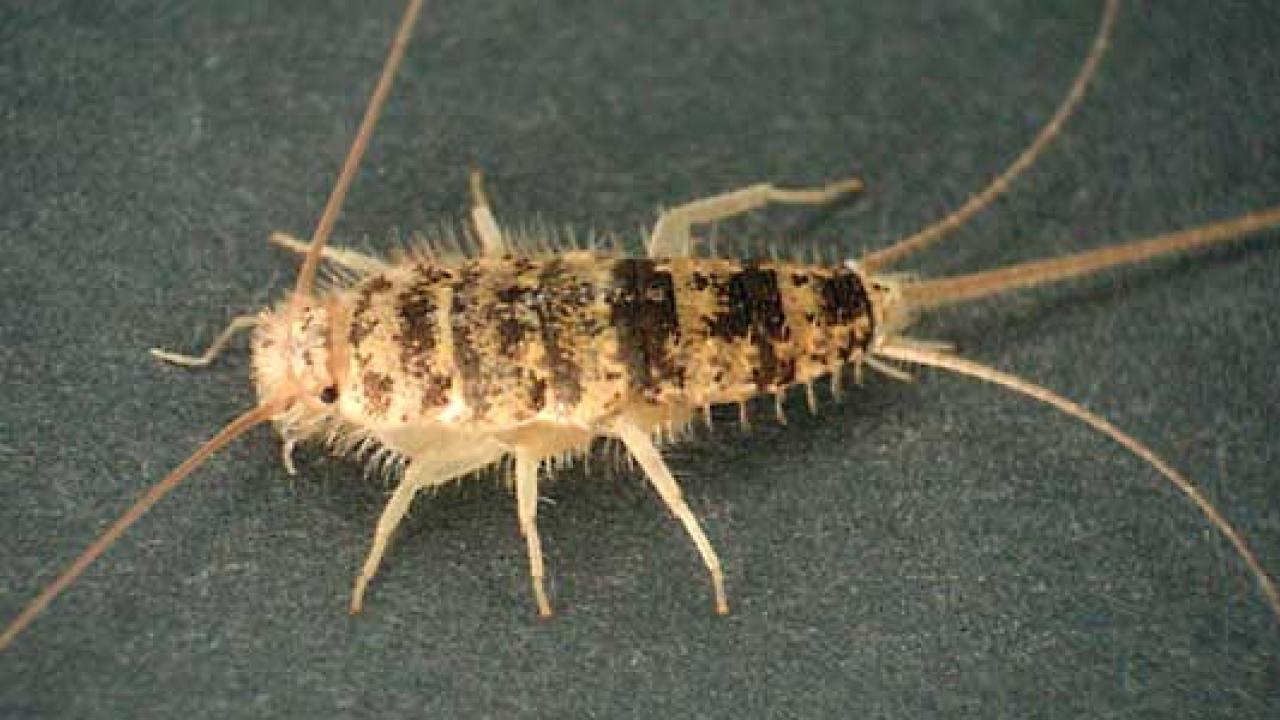
Gene Discovery Pushes Back Origins of Insect Sense of Smell
Quick Summary
- Scent-detecting genes were thought to have evolved in winged insects more than 400 million years ago
- New research inidicates these genes evolved millions of years earlier
- Researchers investigated genome sequences of multiple insect and other terrestrial hexapod orders
Doctoral candidate Philipp Brand and his colleagues at the University of California, Davis, had just finished compiling the genome, or complete set of genetic material of the firebrat — a tiny wingless, nocturnal insect found throughout much of the world — when something surprised him.
There they were–odorant receptor genes, the scent-detecting genes thought to have evolved with winged insects more than 400 million years ago. But this groundbreaking discovery indicates they evolved millions of years earlier.
The sensory gene is considered one of an insect’s most important genes, crucial to foraging, mating and avoiding predators.
“It was interesting because a paper published in 2014 claimed that odorant receptors evolved with winged flight and were thus absent in ancestrally wingless (Apterygota) insects,” said Brand, a member of the UC Davis Population Biology Graduate Group who researches the evolution of olfactory/odorantreceptor genes in orchid bees. “Since firebrats are apterygote, we now had proof that this gene family is more ancient than previously thought.”
The firebrat (Thermobia domesticai), found throughout the world under rocks and leaf litter, is an indoor pest of dog food, stored foods, fabric and book bindings. It is commonly found in high-humidity environments such as bakeries and boiler rooms. Along with silverfish and bristletails, it belongs to the Apterygota (“wingless”), the earliest group of insects to appear in the fossil record about 417 million years ago.
A week or so after Brand’s discovery, entomologist Hugh Robertson of the University of Illinois Urbana posted a paper coming to the same conclusion — but with indirect evidence — on the bioRxiv preprint server. Brand proposed to Robertson that they merge their datasets and write a paper together.
Evolved at the origin of insects
The result: “The Origin of the Odorant Receptor Gene Family in Insects,” by a team from UC Davis, University of Illinois and the University of Tennessee, was published July 31 in the open-access journal eLife.
“Our finding that the odorant receptor gene family evolved at the evolutionary base of the insects makes it a major evolutionary novelty that presumably contributed to the adaptation of early insects to terrestrial living,” Robertson said.
“Odorant receptors are the largest insect gene family underlying the sense of smell. Theyare thus crucial in the majority of behaviors that involve the sense of smell including foraging, reproduction, and detection of predators,” Brand said. In insects, odorant receptors are usually found in the antennae or mouthparts.
The team investigated the genome sequences of species belonging to multiple insect and other terrestrial hexapod (six-legged) orders, specifically Collembola (springtails), Diplura (two-pronged bristletails), Archaeognatha (jumping bristletails), Zygentoma (silverfish and firebrats), Odonata (damselflies and dragonflies) and Ephemeroptera (mayflies) in an effort to find the origins of the odorant receptor gene.
They found odorant receptors in all insect genomes but one, the ancient wingless lineage Archaeognatha. That indicates that the odorant receptor gene family arose in insects before they evolved winged flight, rather than being an adaption to flying as previously proposed.
Other coauthors on the study are: Brian Johnson and Wei Lin, UC Davis and Ratnasri Pothula, William Klingeman and Juan Luis Jurat-Fuentes, University of Tennessee.
Media Resources
- The origin of the odorant receptor gene family in insects (eLife)
- Pest Note: Silverfish and firebrats (UC Integrated Pest Management Program)
- Groundbreaking Research: Odorant Receptor Genes Found in Wingless Insect (UC Entomology & Nematology News)
- This story first appeared on the UC Davis Egghead blog
- Kathy Keatley Garvey, Department of Entomology and Nematology and UC Division of Agriculture and Natural Resources
